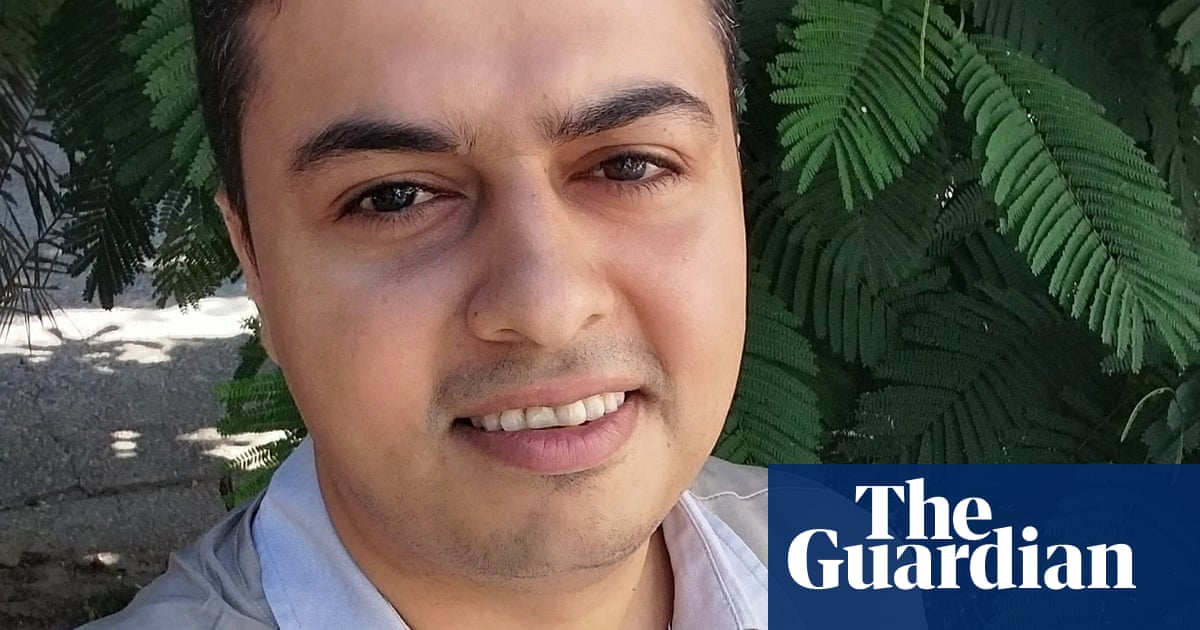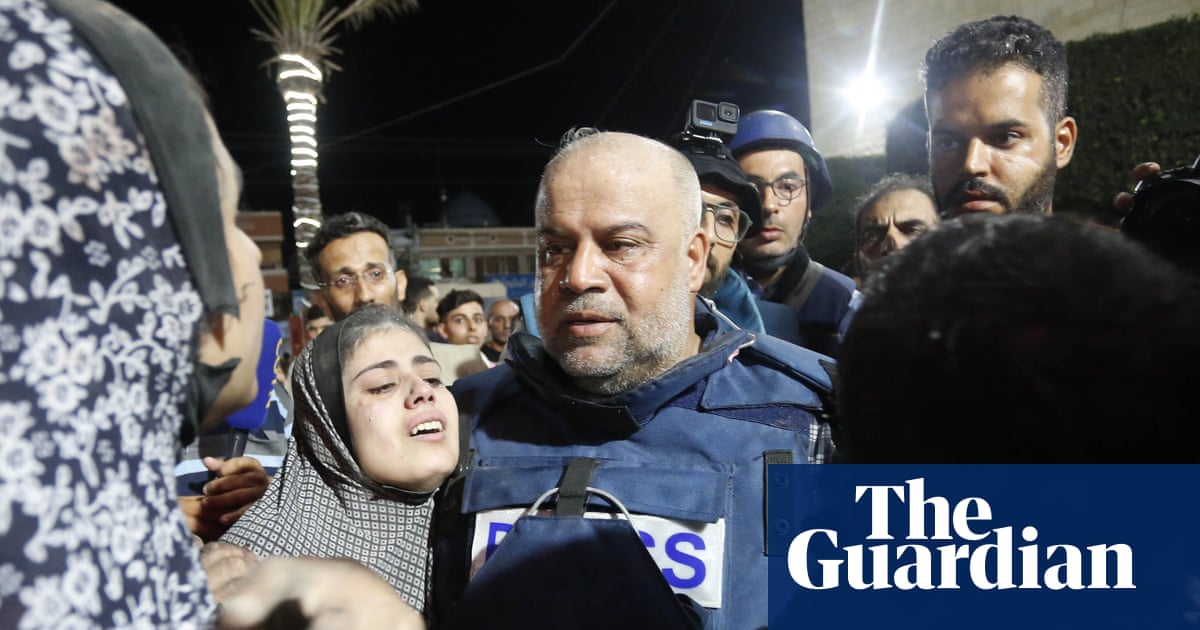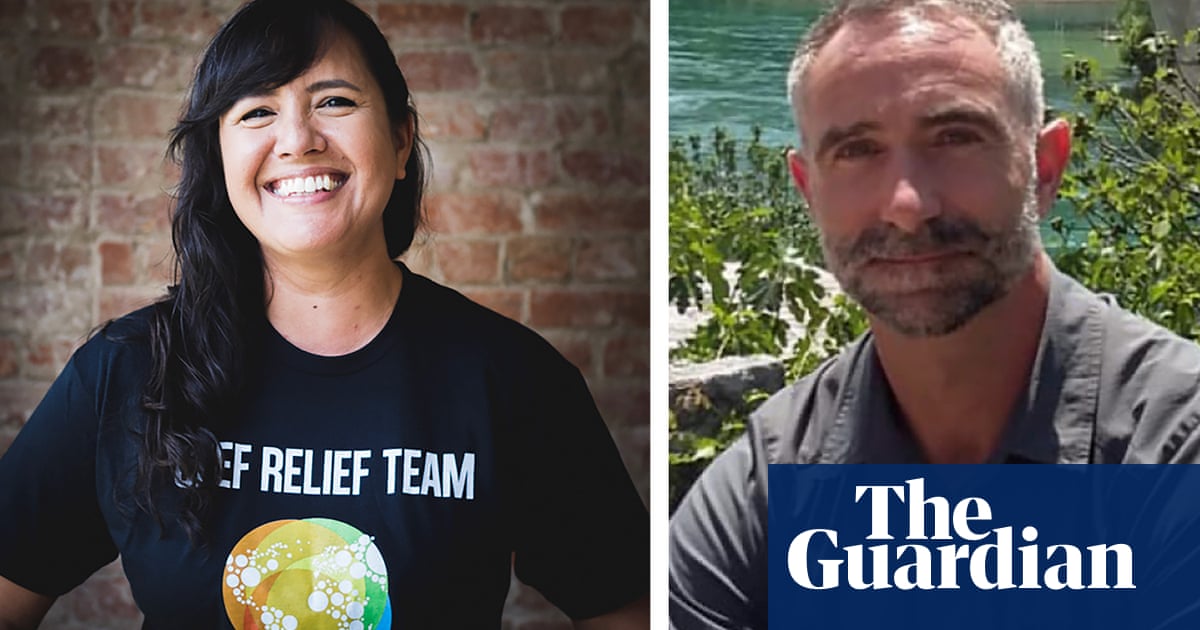
An Israeli military airstrike killed more than 70 members of an extended family, including a veteran UN aid worker, as the UN secretary general warned that the scale of death and destruction inside Gaza is blocking delivery of desperately needed aid.
Issam al-Mughrabi, 56, was killed with his wife, five children and dozens of other relatives in a bombing near Gaza City, said the head of the UN development programme (UNDP) in a statement that also called for an urgent ceasefire.
“The loss of Issam and his family has deeply affected us all,” UNDP administrator Achim Steiner said. “The UN and civilians in Gaza are not a target. This war must end. No more families should endure the pain and suffering that Issam’s family and countless others are experiencing.”
On Saturday, Hamas also claimed that an Israeli military airstrike might have killed five hostages. Abu Ubaida, spokesman for Hamas’s armed wing, said that it had lost contact with the group responsible for holding the Israelis captive.
Israel’s military did not immediately respond to the claims, but it could add to pressure on the government from some families of those held in Gaza, who are calling for a ceasefire to allow the release of their loved ones.
Israel’s prime minister, Benjamin Netanyahu, has vowed the war will continue until Hamas is “destroyed”, defying growing international demands for a ceasefire. These are now coming even from close allies such as the UK and Germany, which are concerned about the civilian toll of Israel’s offensive.
The death toll from Israeli strikes inside Gaza climbed to 20,258, the majority of them women and children, said the Hamas-run health authorities on Saturday. Thousands more are thought to be buried under the rubble of collapsed buildings.
UNDP aid worker Mughrabi was the most recent addition to a fast growing list of UN losses among those deaths.
On average, one or two UN employees have died in Gaza each day of the war – more than 130 in total. That toll is “something we have never seen in the history of the United Nations”, said its secretary general, António Guterres.
Speaking after the UN security council passed a resolution calling for a massive increase in aid shipments, he warned that getting more supplies across the border into Gaza is just the first step towards staving off the imminent threat of famine and deadly epidemics.
“Many people are measuring the effectiveness of the humanitarian operation in Gaza based on the number of trucks from the Egyptian Red Crescent, the UN and our partners that are allowed to unload aid across the border,” Guterres said. “This is a mistake.”
Distribution inside Gaza is equally important and the way Israel is waging war is “creating massive obstacles” to getting aid to hundreds of thousands of people in desperate need, Guterres added. “An effective aid operation in Gaza requires security, staff who can work in safety, logistical capacity and the resumption of commercial activity. These four elements do not exist,” he said.
There are not enough lorries or fuel, roads have been bombed, or blocked by rubble or unexploded munitions, and security is fraying as hunger and desperation grow.
UN staff are often trying to work without power or communications, through mass displacement and the deaths of relatives, colleagues and friends.
The logistics problems detailed by Guterres include a simple question of vehicle capacity. Every pallet of aid that arrives at the border has to be unloaded and the cargo reloaded into different lorries inside Gaza for distribution there.
“We ourselves have a limited and insufficient number of trucks available for this,” Guterres said. “Many of our vehicles and trucks were destroyed or left behind following our forced, hurried evacuation from the north, but the Israeli authorities have not allowed any additional trucks to operate in Gaza. This is massively hampering the aid operation.
“Delivering in the north is extremely dangerous due to active conflict, unexploded ordnance and heavily damaged roads. Everywhere, frequent communications blackouts make it virtually impossible to coordinate the distribution of aid and to let people know how to access it.”
Guterres said a humanitarian ceasefire was the only way to provide quantities of aid that would “begin to meet the desperate needs of people in Gaza”.
The UN security council did not demand a suspension of hostilities on Friday, after the US said it would veto any resolution that did during a long week of negotiations. Instead, it appealed only for the creation of “conditions for a sustainable cessation of hostilities”.
The US, Israel’s staunchest ally, says it has a right to defend itself against Hamas after militants broke through the border on 7 October and killed about 1,200 people, mostly Israeli civilians, and took more than 200 others hostage.
Chief military spokesman R Adm Daniel Hagari said late on Friday that Israeli forces were “nearing full operational control” in the north of Gaza. Fighting raged around Gaza City on Saturday, Reuters reported, citing residents, with thick smoke pooling over northern Jabalia, Gaza’s largest refugee camp.
Israel has urged civilians to leave northern Gaza since its ground operation began in October. But not everyone is able to move and even areas designated as safe in the south are being bombed. With shelters being overcrowded and short of food and water, some residents decided to try to wait out the fighting at home.
“Where should we go to? There is no place safe,” said Ziad, a medic and father of six, speaking to Reuters by phone. “They ask people to head to [the central Gaza city of] Deir al-Balah, where they bomb day and night.”
The latest evacuation orders cover Bureij, a refugee camp in central Gaza, and affected more than 150,000 people, said Thomas White, the Gaza director of the United Nations Relief and Works Agency for Palestine refugees. The intensifying impact of Israeli airstrikes and the blockade mean many internal refugees now travel on foot or in donkey carts. Almost all of Gaza’s population has been displaced, some several times.
“The Israeli army just orders people to move into areas where there are ongoing airstrikes,” White said in a post on X. “No place is safe, nowhere to go.”
Israel blames Hamas for civilian casualties, saying the militant group uses civilian infrastructure, including hospitals and schools, to shield military facilities. Hamas denies using people as human shields.












